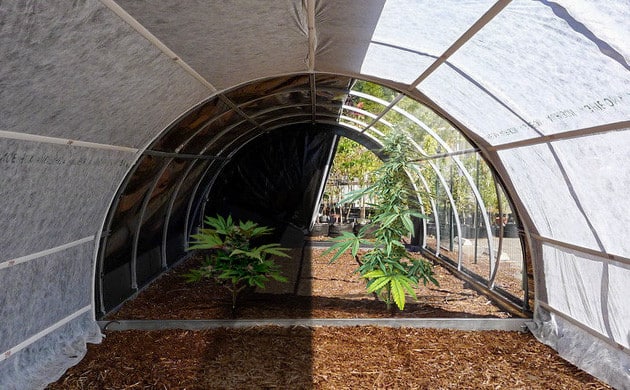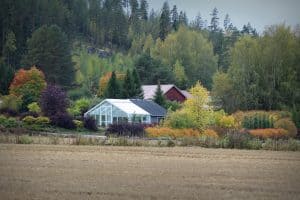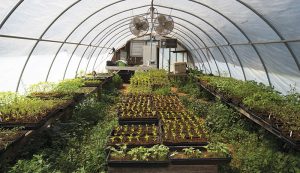Your plants need a goldilocks amount of light to perform photosynthesis. Too little light and the process just doesn’t occur and too much light and you’ll burn the plants. Greenhouse light deprivation is a useful tool in ensuring that the latter never happens to you.
What is Light Deprivation?

Light deprivation is a technique that controls the light exposure of plants, determining how often and how much light gets to plants. This simulates natural growing seasons and allows a gardener to imitate, manipulate, and tweak growing seasons at will.
The cool kids often call it “light dep” or “depo.” If you want to impress your grower friends with super cool lingo, say you’re “depping” your greenhouse. You’ll get invited to a lot more (post pandemic) parties!
Photoperiodism
Think about your own sleep cycles for a moment. You’re probably aware that your body does different things in the day and different things at night, while you sleep—different organs are working, cells are regenerating, your body is getting different hormones. The darkness of night sends your body a signal that it’s time to shift into “rest and restore.” This is called your circadian rhythm.
Plants also have ideal cycles for light exposure!
That characteristic is called photoperiodism: an organism’s response to light exposure. (Read it “photo-periodism” and it’ll make a lot more sense.)
Most creatures of Earth have a photoperiod of 24 hours because we all experience 24 hour days. (Exceptions being those terrifying alien-fish that live in the deep sea, etc.)
Plants’ flowering and seeding cycle are sensitive to the cycles of the sun. Shorten the length of time a plant is exposed to light, and it will “think” the days are shortening, and that Fall and Winter are approaching.
Why use Light Deprivation in your Greenhouse?
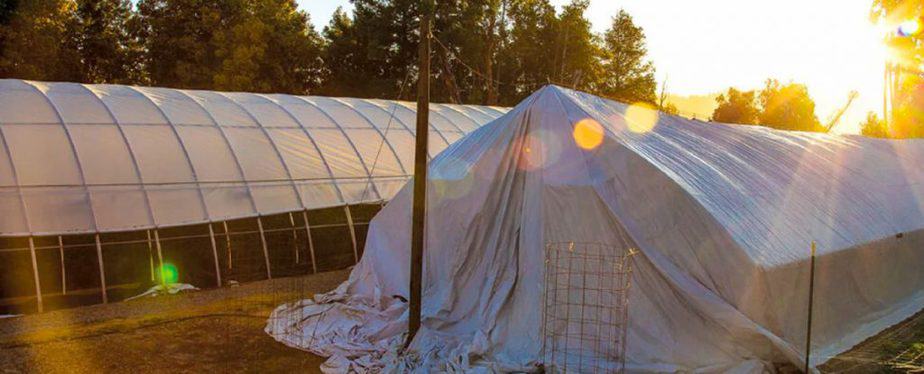
By shortening seasons for a plant, you can force it to flower more than once every year. Controlling the light cycle in your greenhouse allows you to control your plant’s life cycles.
As you know, most plants only create flowers and/or fruit once a year, during a certain season.
So, create shortened, artificial “seasons,” by altering the length of a plant’s “day” and “night,” and you can alter their flowering periods, and therefore your harvest periods!
With light deprivation, you can:
- Increase quality
- Increase yield
- Harvest multiple times per year
- Conserve electricity
Greenhouse Light Deprivation Materials
Like most DIY greenhouse supplies, materials for setting up light deprivation vary in quality, durability, and price.
The simplest and cheapest materials is a simple black tarp or plastic film. It is important to make sure the tarp you choose is specifically denoted as blackout material, or else you risk not fully blacking out your greenhouse, which will royally mess up your light deprivation plans.
A step up and perfect for home greenhouse gardening is a blackout reflective tarp. This is similar to simple black tarp but has a reflective outer surface to add even more protection against light inside. These suit most non-professional greenhouse growers (and some professional ones, too!).
If you want to go full-force with your light deprivation set-up, look for a layered, reflective blackout fabric. These will cost you a pretty penny and don’t give you all that much increase in functionality.
If you don’t have a greenhouse yet, then consider a light deprivation greenhouse kit before you start constuction! You’ll save money and avoid headaches down the road.
Light Deprivation in Your Greenhouse Tips

Ready to get a light depo system set up for your greenhouse? It’s pretty easy to get started once you have the materials that fit your needs…and your house!
The next steps take some planning.
Scheduling
There are many ways to determine your own light depo timing. You’ll need to do some studying when it comes to the necessary amount of light vs. darkness is most stimulating to your plants’ flowering cycles.
A typical schedule for popular light depo systems is 12 hours of light and 12 hours of dark. Keep in mind that that will most likely (unless you live on the equator) mean you need artificial lighting!
When does your local seasonal light change so that you need to cover your greenhouse or provide more light artificially?
When you choose to cover and uncover is up to you. You should base the schedule on our climate, humidity, and your own personal schedule.
Know your plants’ growing season.
What’s the flowering period of your crop? Does it bloom in Fall? How much light or darkness does it typically need to flower?
These questions will determine your light deprivation schedule.
Be a stickler about scheduling!
If you’re not a stickler when it comes to covering and uncovering your greenhouse at the same time every single day, your light deprivation system won’t work at all.
Eliminate light leaks…completely!
It’s essential that your house is completely blacked out. Otherise, the whole light depo operation is for naught! Plants are super sensitive to the sun’s light—it’s how they make energy! So they’ll be affected by any amount of light leaking in.
Covering and uncovering take time and energy.
If you have a large greenhouse—or even just a tall one—you’ll need a ladder and perhaps and extra pair of hands to cover and uncover your greenhouse. Covering, in particular, is a task that requires a bit of patience and diligence (see above!).
Ventilate!
When you cover your greenhouse, you’re going to be blocking the airflow coming from windows and vents. For this reason (and other obvious reasons), it’s most helpful to cover your greenhouse during cooler hours (aka night).
Be sure you have an excellent ventilation set-up so your greenhouse gets good airflow during the day.
Light Deprivation with Hoop Houses
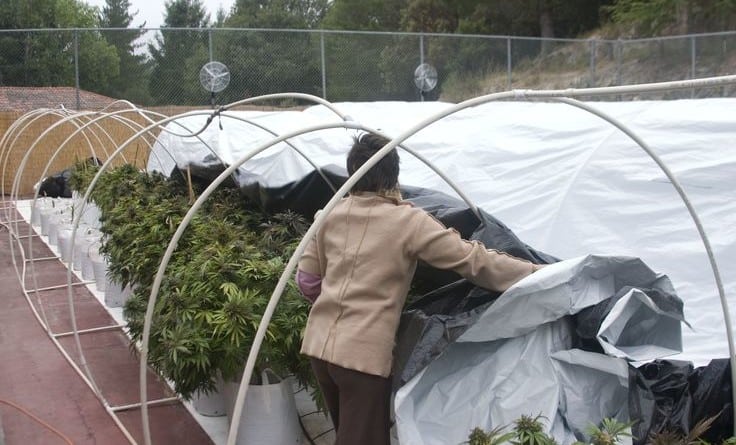
The simplest and cheapest way to use light deprivation in your backyard greenhouse is with a hoop house. The hoop house is also considerably simpler and cheaper than any other type of backyard greenhouse design.
Get a thorough look at building your own hoop house or cheap greenhouse here: Can I Build My Own Greenhouse?
Light deprivation with a hoop house can be achieved simply tossing a tarp or film (see above) over your hoop house and weighing or staking it down.
Keep in mind that a simple hoop house isn’t ideal year-round, because it doesn’t retain heat sufficiently and the materials will typically only last you a year or two before needing to be replaced.
Read more about greenhouse materials, their pricing, and their longevity in our guide to Best Greenhouse Glazing Materials.
Automated Light Deprivation Systems

Automating your light deprivation system is a giant leap into greenhouse technology that requires either a decent level of mechanical skill or a huge amount of patience and willingness to learn.
And that’s a story for another time…let us know if you’re ready to hear more! If you’re inspired by the idea of automating your greenhouse, then consider starting with the vents.

